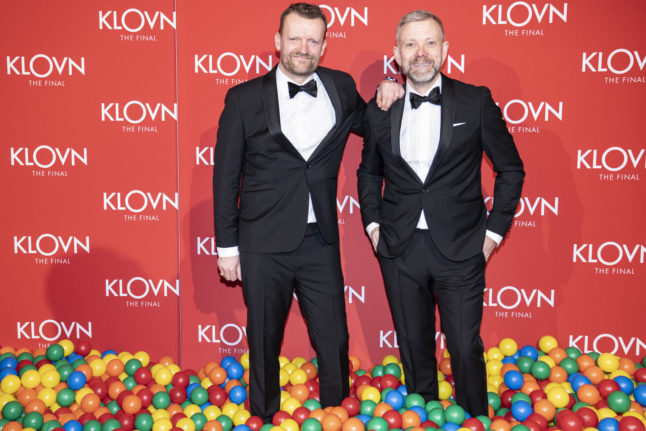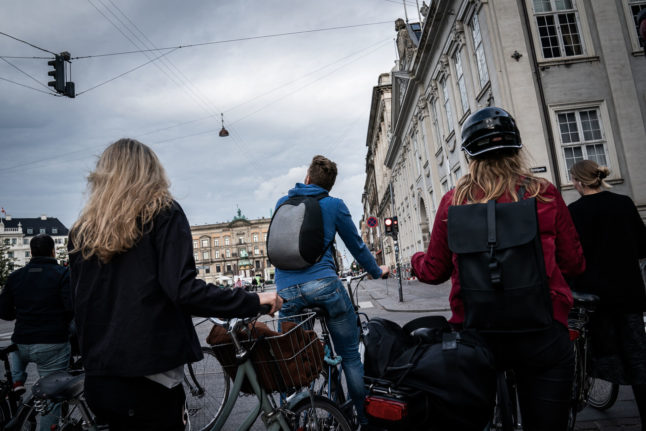From the quick-as-a-flash quip, to the straight-faced silence – Danish humour can take a bit of getting used to. The national sense of humour is often spoken about by Danes with a sense of national pride, but for foreigners in the country, Danish jokes often just don’t land.
“Danes think our humour is very kind and friendly and hyggelig, so we think we have a very inclusive sort of humour. But foreigners have exactly the opposite view,” Lita Lundquist, co-author of the book ‘Danish Humour – Sink Or Swim’, told The Local.
“I started interviewing internationals working with Danes, such as in the European Parliament and asking them how they perceived our humour. What many said was Danish humour is rude, inappropriate, in your face, blunt and impolite. Many feel hurt, even insulted. So that’s a paradox,” Lundquist said.
As a linguist and Professor Emeritus at Copenhagen Business School, Lundquist has spent over a decade researching humour. After some awkward responses to her own Danish humour, she decided to write a book about it.
“The traits of Danish humour are firstly the quick reaction; we don’t ponder too much if it’s appropriate or not.
“Another thing is that Danes are very ironic. In order to understand irony you have to understand the context and society you’re in and that’s very difficult for newcomers to Denmark – they don’t know the special references,” Lundquist explained.
“We are also not just ironic but often self-ironic, meaning that in Danish society we’re not pompous and do all we can to lower ourselves, pretend to be smaller than we are. Irony is a pretence and you are pretending to be small and not smart but actually you want to convey that you are very, very smart.
“But it’s our way of showing you’re part of our community. I see you as a friend of mine so that’s why I can take the liberty to be so direct,” she said.
READ ALSO:
- OPINION: Sometimes I wish my Danish in-laws would shut the f*ck up
- Why is group singing such a popular custom in Denmark?
Lundquist teamed up with British translator and co-author Helen Dyrbye to write the book, so Helen could share her own encounters of Danish humour, after living in the country for 30 years.
“Often Danish humour involves irony and self-irony and they’re quite complicated. Sometimes you don’t even realise it’s humour,” Dyrbye explained to The Local.
The authors hope their book can be used in integration packages for foreigners and have presented it to various municipalities.
“What foreigners often find difficult is the setting. The book deals mostly with humour in the workplace because this is where people least expect it. Danes use humour as a way of levelling the playing field because Danish society is very flat [hierarchically, ed.]. So it can be very disconcerting when a boss says something that undermines their own authority – but it’s self-irony to level the playing field,” Dyrbye explained.
“There’s also the fact the participant can be someone you don’t know and that the timing is so fast and then the fact they keep a poker face.
“Part of the fun of irony is you pretend that what you’re saying is true but it isn’t. That’s part of how you know they’re joking, when the conversation stops and there’s a pause and you think, ‘they don’t mean that, do they? Could they mean that?’ Then after about 10 seconds they smile.
“The best reaction is to smile or joke back but don’t jump to conclusions. There are high levels of trust in Denmark and they trust that you know what they’re saying is a joke. Foreigners are not as trusting so don’t have that common ground and you need that in irony,” Dyrbye explained.
The book uses many real-life examples of Danish humour gone wrong in international settings.
“One example in the book is about a Chinese student who was starting his studies at Copenhagen Business School,” Lundquist explained.
“He was in class with students and had a ‘buddy’, who was a Danish student to take care of him. The Chinese student politely said, ‘I have heard that the Danes are the happiest people in the world.’
“The Dane, quick as a flash replied, ‘That’s because of our excessive use of alcohol and sex.’
“The Chinese student was surprised and didn’t know how to react. In his culture you would never have dared say such a comment, it was breaking taboos on both reaction and the mention of alcohol and sex,” Lundquist said.
“Danes are quite blunt and don’t have small talk as such and they can talk about subjects that would be a taboo in other countries,” Dyrbye said.
“There are also softeners in Danish which are untranslatable. Lots of tiny words like ‘jo‘, which mean ‘take what I’m saying with a pinch of salt.’ But when Danes use English for their humour, which they often do, they miss these softener words and it sounds very direct.
“I think there’s a lot of learning to be done on both sides. It’s about foreigners learning how Danes think but Danes also understanding how their humour could be misinterpreted, so needing to take a beat rather than dashing straight in there”.



 Please whitelist us to continue reading.
Please whitelist us to continue reading.
I understand how people can be misunderstood with their humour. At the same time, because it’s so often the spontaneous remarks that are the funniest, it can be difficult to find that fine line – if indeed there is one – between spontaneity and thoughtful editing.
Danish humour is one thing but meanwhile Danish reservations of foreigners is another as it’s still extremely difficult to be invited into Danish friendship circles … Maybe an article on this could be useful …